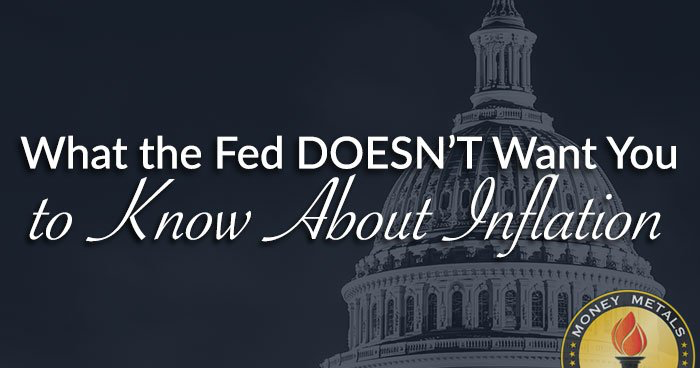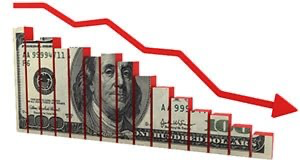
Is it a temporary blip… or the beginning of a long-term trend? That’s the key question facing consumers, investors, and retirees when it comes to inflation.
There’s no denying that inflation pressures have picked up dramatically over the past 12 months. Price spikes in commodities including copper, grains, gasoline, and lumber tell the story – as do the raging bull markets in equities and housing.
Rapidly rising prices across an array of asset classes are a symptom of excess currency creation.
As economist Milton Friedman famously noted, “Inflation is always and everywhere a monetary phenomenon in the sense that it is and can be produced only by a more rapid increase in the quantity of money than in output.”
Friedman wasn’t a gold standard or hard money proponent. Instead, he hoped to persuade monetary authorities to act responsibly!
Given the reckless policies undertaken recently by central bankers at the Fed – zero interest rates, Quantitative Easing to infinity, and “symmetric” (above 2%) inflation targeting – Friedman’s hope was misplaced.
Billionaire Warren Buffett, chairman of Berkshire Hathaway, warned at his company’s shareholder meeting last weekend, “We are seeing very substantial inflation.”
Home buyers are feeling it. Lumber prices are at an all-time record high after months of relentless rises, helping push home building costs higher by double digits.
So are motorists. The national average price of gasoline at the pump is up more than $1 per gallon compared to a year ago.
 The Consumer Price Index surged 0.6% in March, the biggest monthly increase in nearly a decade. An imperfect measure of inflation, the CPI tends to understate real-world cost increases.
The Consumer Price Index surged 0.6% in March, the biggest monthly increase in nearly a decade. An imperfect measure of inflation, the CPI tends to understate real-world cost increases.
Federal Reserve officials insist these extant inflation pressures are “transitory” – a consequence of the rise off the extreme lows in asset markets seen during last year’s pandemic panic. According to the Fed, the economy is merely returning to normal – and as it does inflation will moderate toward Chairman Jerome Powell’s target of about 2% annually.
The problem with the narrative the Fed is peddling on inflation is that U.S. fiscal and monetary policy are still going full blast with “emergency” spending and stimulus. There is no let-up in sight.
The Treasury Department recently reported it expects to borrow $463 billion in the current quarter – spiking the federal deficit to an astounding $2.3 trillion for the full budget year.
Treasury officials acknowledged the Biden administration’s borrowing binge represents hundreds of billions of dollars more in red ink than they previously estimated in February.
The extra borrowing is necessitated by President Joe Biden’s $1.9 trillion COVID relief bill, which authorized $1,400 stimulus checks, expanded emergency unemployment benefits, and various other handouts.
Generous unemployment payments are having an unintended consequence. Millions of Americans are choosing to stay home and collect benefits rather than work. That is contributing to a labor shortage, one that is especially pronounced in the restaurant and retail industries.
Thanks to competition from all the government handouts, businesses are having to jack up wages and even dangle big signing bonuses to attract workers. Those that haven’t may soon be forced to if as state and federal minimum wage hikes go into effect.
A 1970s style wage-price spiral may not be far off.
Wage-driven inflation hasn’t really hit the U.S. economy in decades. It’s the missing piece in a potential secular trend of rising inflation.
While commodity price spikes are often transitory due to the volatile nature of futures markets, wage pressures once unleashed tend to feed into higher inflation on a more sustained basis. Once wage expectations rise, they tend not to come back down to the earlier level.
Unfortunately, wage earners along with investors and retirees stand to lose purchasing power on any U.S. dollars they receive. The Fed is bent on keeping interest rates depressed to ensure a negative real rate is imposed on savings – an insidious policy which saps away the wealth of savers while transferring some of it to debtors.
The classic inflation hedges of gold and silver remain essential holdings for anyone who wishes to maintain purchasing power over time.
The U.S. dollar’s decline isn’t transitory in nature. It is persistent. Federal Reserve Notes will keep declining in value year after year – the only question is how rapidly.
Nobody knows how high inflation might get in the years ahead.
The Fed claims it has the tools to keep inflation “well anchored” should its rise become a bigger problem. But does it have the will to inflict financial pain upon Wall Street, the big banks, and the U.S. government itself?
They are all addicted to the Fed’s low interest-rate stimulus.
In this environment where the bond market and the entire financial economy is artificially propped up, bubbles never fully burst. Instead, they are constantly being reinflated on a rotating basis.
When inflation expectations become “unanchored,” fear will drive mainstream investors to make dramatic moves to try to protect themselves. The biggest rotation of all could be from dollar-denominated financial assets into tangible assets including physical precious metals.

